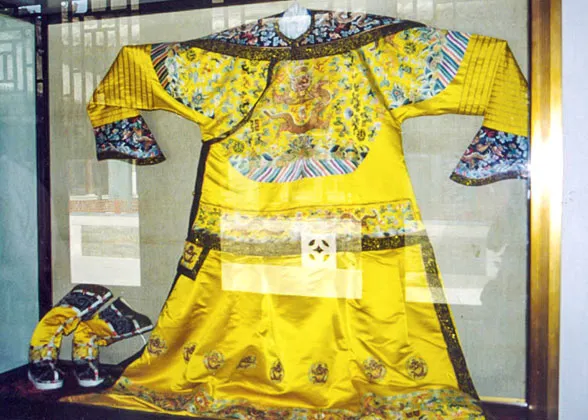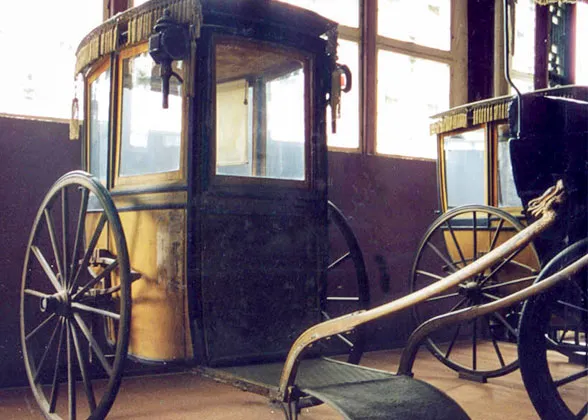Garden of Virtue and Harmony (Deheyuan)
Located northwest of the Hall of Benevolence and Longevity, the Garden of Virtue and Harmony (Deheyuan) is a large complex dedicated to Empress Dowager Cixi's (1835~1908) love for Peking Opera. It spans four courtyards from south to north, including the front gate, the Grand Theater, the Hall of Nurtured Joy, the Hall of Celebrating Virtue, and the rear gate.
 |
| Garden of Virtue and Harmony |
History
Originally built as Hall of Pleasant Spring (Yichuntang) in 1750 by Emperor Qianlong (1711~1799) as a temporary rest stop, the Garden of Virtue and Harmony was destroyed in a fire in 1844.
Emperor Guangxu (1871~1908) began reconstructing it on the ruins of the Hall of Pleasant Spring in 1891 and completed it in 1895. Operating from 1895 to 1908, the Garden mainly staged Peking Opera performances, occasionally showing lion dances and acrobatics.
In 1984, the Garden of Virtue and Harmony was opened to the public. Staff wear Qing dynasty (1644~1911) court costumes and greet visitors with traditional court etiquette. In addition to the original court displays, the halls also exhibit Cixi's daily necessities and royal glassware.
|
|
Today, most of the buildings in the Garden are restored to their original state, allowing visitors to know about imperial theater life from the outside. The former dressing room for performers behind the Grand Theater has been open to visitors, displaying artifacts on different themes, including theatrical artifacts, calligraphy, and painting.
Why was the Garden of Virtue and Harmony built?
 |
| Empress Dowager Cixi |
The Garden of Virtue and Harmony was constructed because Empress Dowager Cixi found the original theater in the Hall for Listening to Orioles of the Summer Palace too small and too far from her living quarters.
Passionate about Peking Opera, Empress Dowager Cixi would watch performances at the Garden of Virtue and Harmony from 8:00 to 15:00, and had meals on the spot. She watched opera here for 262 days in total, with a maximum of 40 days in one year. She even continued to do so 35 days before her demise in 1908.
Highlighted Buildings
Grand Theater
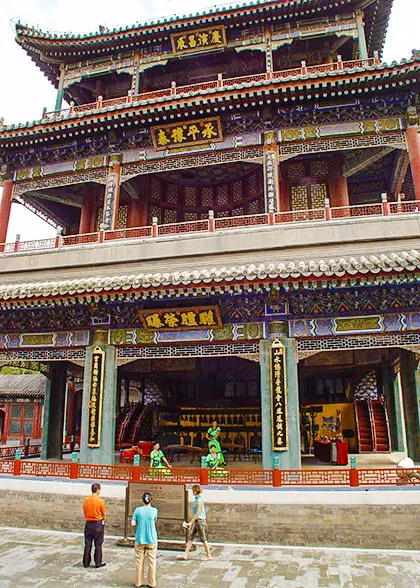 |
| Grand Theater |
The Grand Theater (Daxilou) is the main building of the Garden of Virtue and Harmony. Along with the Pavilion of Pleasant Sound in the Forbidden City and the Pavilion of Clear Sound (Qingyinge) in Chengde's Mountain Resort, they are known as the three grand theaters of the Qing Dynasty, but the Grand Theater in Summer Palace is the largest and most exquisite.
Facing south, the 21-meter-tall (68 feet) theater is divided into three floors named Happiness (Fu), Prosperity (Lu), and Longevity (Shou) from bottom to top.
The first floor has a small stage used as a pit for the orchestra. Below the stage is a well about ten meters (32 feet) deep, surrounded by five square pools on the east, west, and north sides, which can create water-spraying effects during performances and enhance the resonance of voices.
The second floor features a rectangular sky well in the middle and smaller sky wells at each corner, specifically designed for actors to change scenes across the three floors during grand performances.
The third floor is equipped with winches, allowing actors portraying celestial beings to descend from the sky during mythological performances.
 |
| 1st Floor of the Grand Theater |
After the construction of the Grand Theater, Empress Dowager Cixi frequently invited renowned actors to perform and sponsored them, contributing to the development and refinement of Peking Opera. Hence, the Grand Theater is known as the "Cradle of Peking Opera".
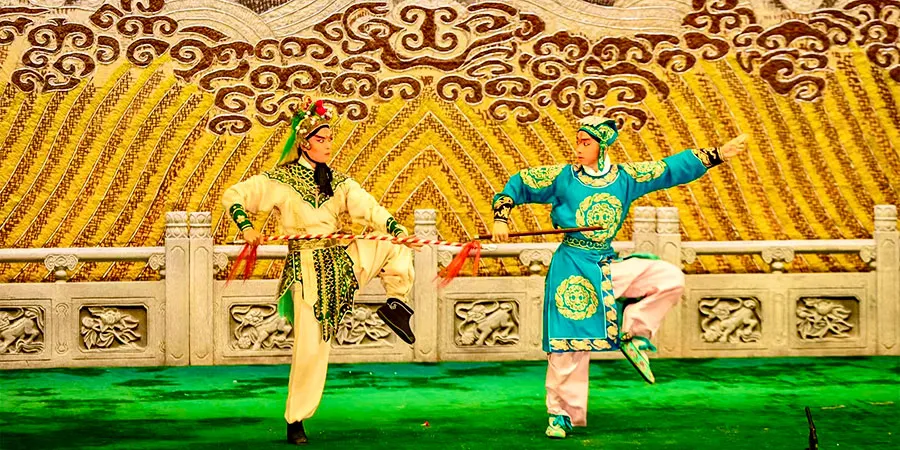 |
| Peking Opera Show |
Yu Deling (1886~1944), a multilingual writer who once served as an interpreter for Empress Dowager Cixi, meticulously documented a performance at the Grand Theater.
The show opened with "The Peach Banquet", featuring angels descending from heaven in yellow robes and red cassocks, with pagodas rising from the center and corners of the stage, from which emerged five Bodhisattvas.
Then, a massive lotus ascended, with Guanyin Bodhisattva (embodiment of compassion and wisdom) seated atop it, flanked by a pair of child attendants. Following her entrance, the Queen of Heaven arrived with many immortals, and the mischievous Monkey King concluded the scene by causing a commotion. The magnificent scenery and spectacular scenes amazed Deling, who had just returned from abroad.
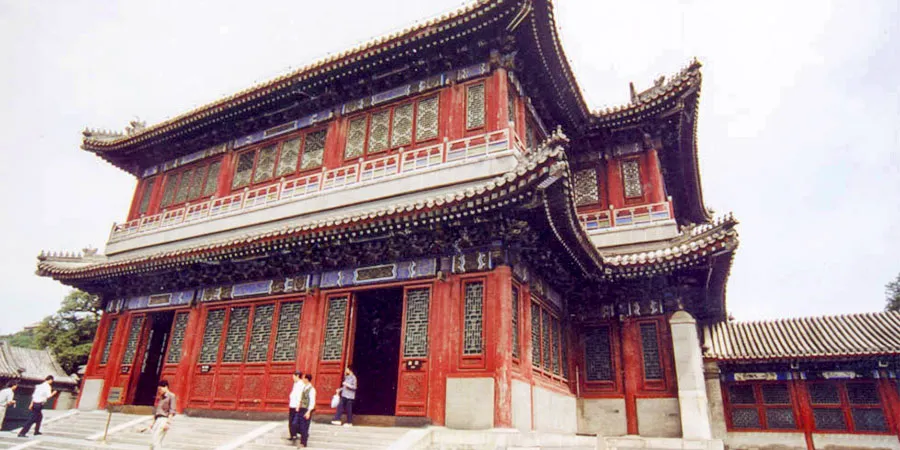 |
| Costume Hall behind the Great Theater |
Hall of Nurtured Joy
Located opposite the Grand Theater, the Hall of Nurtured Joy (Yiledian) served as the viewing hall, consisting of seven rooms with a platform base 22 cm (8 inches) higher than that of the Grand Theater's ground floor, ensuring a full view of all three tiers of the stage.
 |
| Nurtured Joy Hall |
Empress Dowager Cixi's throne, adorned with gold lacquer and enamel depicting birds paying homage to the phoenix, was prominently placed in the central room. She would sit here or on a long sofa by the west window to enjoy the opera. While watching, she would often tap her legs in rhythm, hum along, and even take to the stage herself in the heat of the moment.
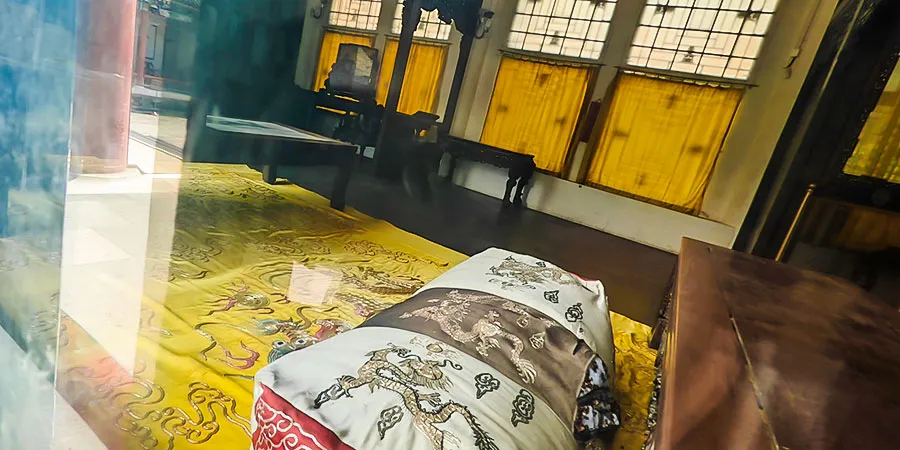 |
| Empress Dowager Cixi's Sofa |
Emperor Guangxu watched performances in the east room, accompanied by the Empress and concubines who stood beside him.
The corridors on both sides of the Grand Theater served as viewing galleries for nobles and ministers. Only about forty to fifty people had such privilege, seated on red cushions according to their ranks and grades.
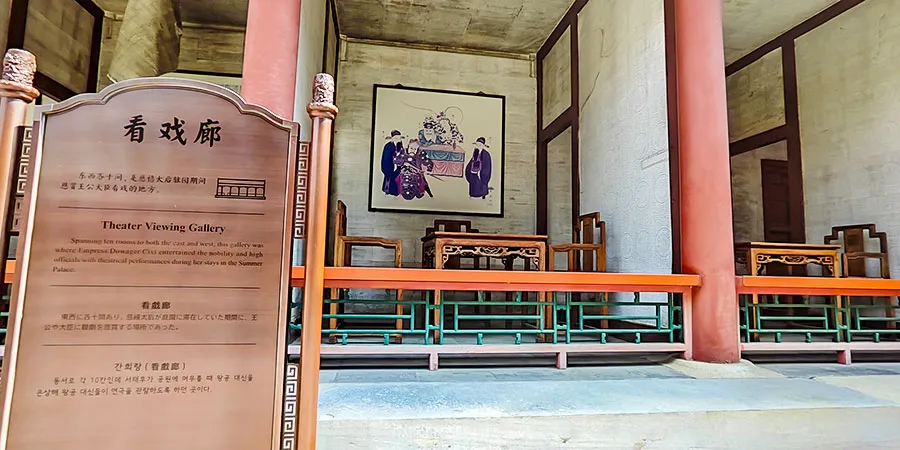 |
| Theater Viewing Gallery |
American painter Katharine Augusta Carl (1865~1938) was invited to the Summer Palace in 1903 to portrait Empress Dowager Cixi. On Emperor Guangxu's birthday, she watched a performance from the verandah of the Hall of Nurtured Joy alongside imperial concubines.
A giant dragon danced and rolled with a fireball, accompanied by warriors, officials, prince, and retainers. After circling the stage, it stopped to pay homage. Suddenly, the dragon sprayed water.
Unfamiliar with the opera plot and unprepared for the stage mechanism, and standing at the outermost edge of the verandah to catch every detail, Carl was drenched by the sudden jet of water. The imperial concubines, who knew what to expect, had already left and couldn't help but laugh at her surprised reaction.
Hall of Celebrating Virtue
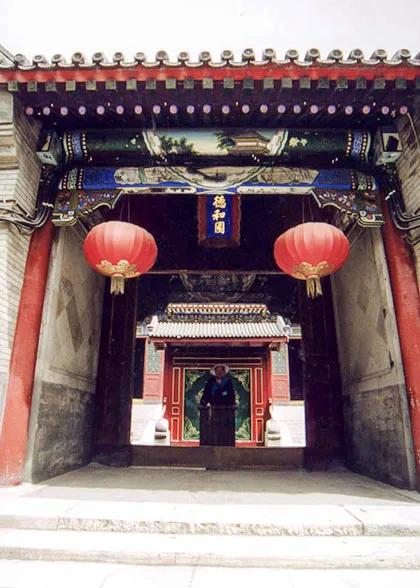 |
| Gate of the Virtue & Harmony Garden |
The Hall of Celebrating Virtue (Qingshantang), the main hall in the backyard, boasts a central passage and large glass windows on all sides which bring ample sunlight. It served as a temporary retreat for female royals during their opera-watching sessions.
American painter Katharine Augusta Carl used to paint Empress Dowager Cixi's portrait at the Hall of Celebrating Virtue. Far from being an attentive model, Cixi often required doubles to step in for her. Despite this, she was extremely particular about selecting an auspicious date and time for both the start and completion of the portrait.
However, Carl usually finished the portrait before the designated moment. Facing the challenge, Cixi's favored eunuch Li Lianying (1848~1911) devised a solution: leaving a small blank on the Cixi's robe in the portrait. With colors and the brush in readiness, they completed the portrait as soon as the auspicious moment arrived, bailing Karl out of a tight spot.
![]() Next: Hall of Jade Ripples
Next: Hall of Jade Ripples
![]() Related Link: Summer Palace Travel Tips
Related Link: Summer Palace Travel Tips
- Last updated on Oct. 10, 2025 by Jally Zhang -
